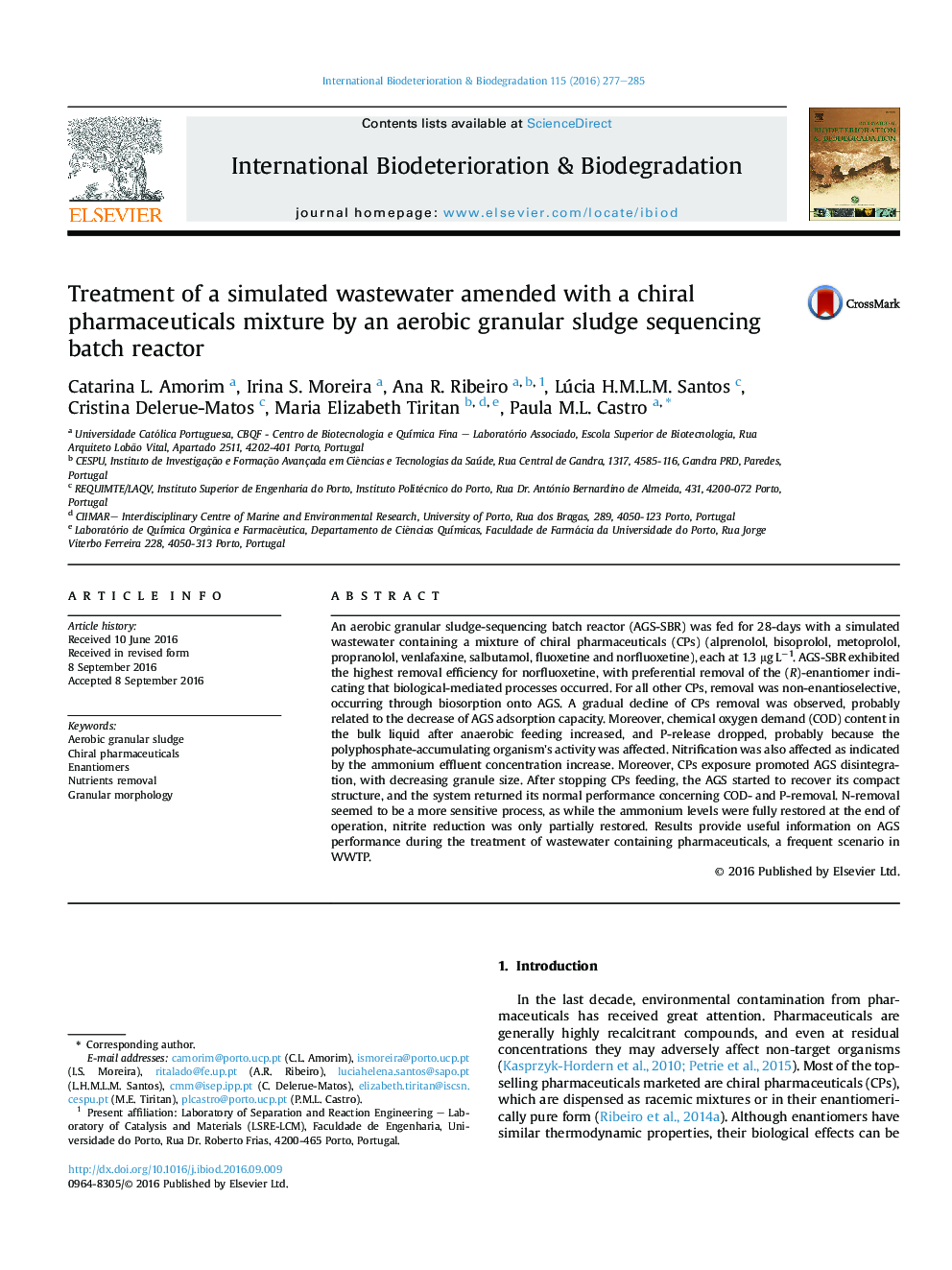| کد مقاله | کد نشریه | سال انتشار | مقاله انگلیسی | نسخه تمام متن |
|---|---|---|---|---|
| 4364187 | 1616302 | 2016 | 9 صفحه PDF | دانلود رایگان |
• An Aerobic Granular Sludge reactor was feed with a mixture of chiral pharmaceuticals.
• Enantioselective removal of norfluoxetine was observed.
• Sorption seemed to be the dominant mechanism for chiral pharmaceuticals removal.
• Chiral pharmaceuticals temporally affected C-, N- and P- removal performance.
• Chiral pharmaceuticals exposure affected biomass morphology which was able to recover.
An aerobic granular sludge-sequencing batch reactor (AGS-SBR) was fed for 28-days with a simulated wastewater containing a mixture of chiral pharmaceuticals (CPs) (alprenolol, bisoprolol, metoprolol, propranolol, venlafaxine, salbutamol, fluoxetine and norfluoxetine), each at 1.3 μg L−1. AGS-SBR exhibited the highest removal efficiency for norfluoxetine, with preferential removal of the (R)-enantiomer indicating that biological-mediated processes occurred. For all other CPs, removal was non-enantioselective, occurring through biosorption onto AGS. A gradual decline of CPs removal was observed, probably related to the decrease of AGS adsorption capacity. Moreover, chemical oxygen demand (COD) content in the bulk liquid after anaerobic feeding increased, and P-release dropped, probably because the polyphosphate-accumulating organism's activity was affected. Nitrification was also affected as indicated by the ammonium effluent concentration increase. Moreover, CPs exposure promoted AGS disintegration, with decreasing granule size. After stopping CPs feeding, the AGS started to recover its compact structure, and the system returned its normal performance concerning COD- and P-removal. N-removal seemed to be a more sensitive process, as while the ammonium levels were fully restored at the end of operation, nitrite reduction was only partially restored. Results provide useful information on AGS performance during the treatment of wastewater containing pharmaceuticals, a frequent scenario in WWTP.
Figure optionsDownload as PowerPoint slide
Journal: International Biodeterioration & Biodegradation - Volume 115, November 2016, Pages 277–285
